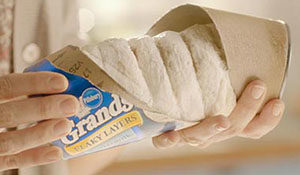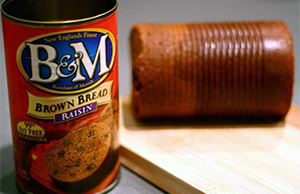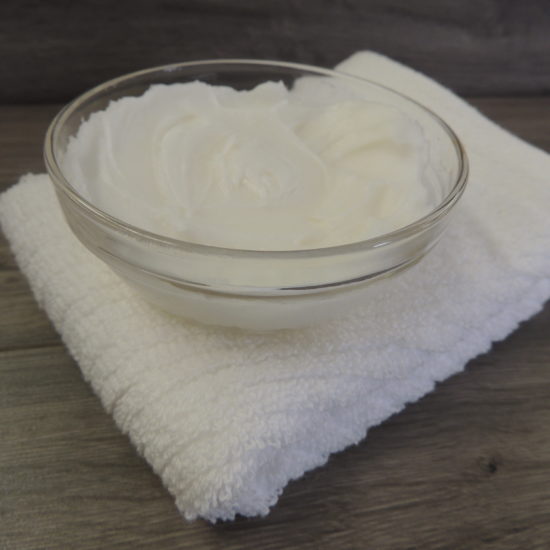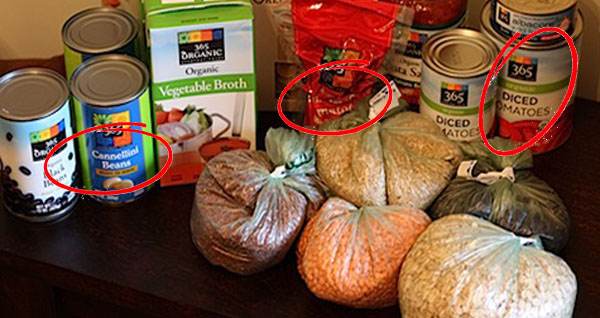
After any SHTF scenario or major natural disaster, food is going to be one of the most vital things to have available. You won’t be able to rely on what’s in stores – panic buying or looting will probably have cleaned them all out unless the police or the military have secured them first. Either way, the goods in them won’t be available to you. Unless you already have a working smallholding it’s going to take time before you can grow your own, as well. If you want to get through the initial months after the event you’re going to need to have substantial food stocks to hand– ideally enough for at least a year, but even two or three months’ worth will buy you time to become self-sufficient.
The food you store needs to be nutritious enough to keep you healthy, and have enough caloric value that you’ll be able to work hard for long days without feeling fatigued – surviving isn’t an easy task. It also needs to have enough variety not to become monotonous, and stocking up on a few favorites will help keep your morale up in stressful circumstances.
Unfortunately, you can’t just store anything you like. If you don’t have your own generator power will be unreliable, so you can’t depend on anything that needs to be kept frozen or refrigerated. That rules out most modern ready meals. Tinned food is a better bet – much of it can be safely stored at room temperature for years – but some tinned goods will also deteriorate. That’s also an expensive way to build up a reserve, so for most people, the realistic option will be to stockpile some staples – mostly carbohydrates – and use foraged or grown items to supplement them.
Many bulk foods, like pasta, beans, or dry white rice, can be stored almost indefinitely. Others can’t; over time they will go stale or rancid, and they can also attract pests. Here is an introduction to the main goods that you either CAN’T store or should do so with a lot of caution.
#10 Baked Goods
Baked goods can’t be stored for more than a few days without freezing, so it’s tempting to stock up on enough flour to let you bake your own for a few years. Unfortunately, this isn’t a great idea. Flour can be stored for a while, but it isn’t viable as a long-term option. Wheat flour will only last around eight months before deteriorating badly. Refined flour does a bit better, but even then it can only really be kept for around two years.
The major problem with flour is infestation by psocids, or booklice, which are tiny black or brown insects. Once the flour has been opened it will quickly attract these pests, and once they get in they’ll multiply quickly. To deter them always store flour in sealed airtight containers, and make sure it’s absolutely dry. Flour usually comes in paper packages, and psocids are well known for their ability to get through paper. If you want to store a few months’ supplies of flour then seal the bags inside plastic ones – if you can vacuum-pack them that’s even better – then store those in a plastic bin with a tight-fitting lid. Keep the area around the store clean and sweep up any spilled flour immediately (don’t mop it) to avoid attracting psocids. Never mix old and new flour.
If the SHTF you can’t rely on having more than two years’ supply of flour, why not store grain instead? This is protected by its natural husks, so it’s much more resistant to insects. Mice and rats can be a problem, though, so again pack wheat or barley in plastic bags and store them in a bin. Rats can chew through plastic – consider a thoroughly cleaned steel trash can.
Another option is to buy flour and bake it into hardtack. You will find plenty of recipes for this traditional military and seafaring food. It’s extremely simple to make – just flour, water, and a pinch of salt – and if you keep it dry it will last for years.
#9 Canned Bread
There’s a popular recent trend for baking home-canned bread and cakes. These are simple to make; usually, you pour batter into Mason jars, bake them in the oven, then seal the jar and cool it. That creates a partial vacuum inside the jar, which will preserve the contents for a while. Canned baked goods, especially cakes, are often given as Christmas or birthday gifts, and that’s usually not a problem. However, a lot of people also say that they can be stored for up to a year; some claim they can be stored indefinitely.
It might sound tempting, but this is a really bad idea. The problem is a bacterium, Clostridium botulinum. This organism grows from tough spores that are found almost everywhere but will only grow in certain conditions. It thrives in moist, nutrient-rich environments with little or no oxygen – and unfortunately, the baking and canning process creates an environment that’s just about perfect for it. As the bacteria grow they produce a toxin, commonly known as botox, that can be lethal when it contaminates food.
There is no guaranteed way to make Botulinus-free canned bread at home. The spores are heat-resistant enough that baking won’t kill them, and although some scientists have developed bread recipes that are designed to prevent the bacteria from growing it’s just too easy to get it wrong. Canned bread is fine as a gift or treats that will be eaten within a few days, but it should never be stored long-term. It is definitely not safe, and the consequences can be deadly. In a survival situation, botox poisoning is untreatable. Don’t risk it.
#8 Canned Tomatoes
Most canned foods can be stored for a long time – often pretty much indefinitely. Tomatoes are one of the exceptions. The problem is the juice, which over time will attack the can. When you hear people complain about issues storing canned foods, a lot of the time it’s going to be a tomato product. Possible problems include bulged or leaking cans and even split seams.
Even if the can looks fine and there are no visible leaks it could have tiny perforations that mean it’s no longer airtight – and so it’s no longer safe. If you open any can of a tomato product and it’s discolored or has an unusual smell, don’t risk it – throw it out. Few preppers can resist keeping some canned tomatoes because they’re so versatile but don’t keep more than about six months’ worth and make sure you rotate your stock regularly.
#7 Canned Fat Meat (some)
There are risks in storing any kind of meat because it can host so many bacteria and parasites; canned varieties are among the safer ones but there are still limits. Meat contains fat, and fat is made up of acids; the contents can be acidic enough to damage the can. The quality will also go downhill after a while, so even if it’s still safe it won’t be very appetizing.
Canned tuna will also deteriorate – it tends to become mushy after long storage. Other canned foods are usually safe to keep for several years at least; texture and flavor may deteriorate, but they should stay edible. For best results keep cans in a dark, dry place with a constant cool temperature. Avoid uninsulated attics or garages, as these often have dramatic temperature changes. Basements are ideal as long as they don’t have a dampness problem. Damp conditions will eventually corrode cans, and this can let air in long before there are any visible leaks.
#6 Homemade Jerky
Compact dehydrators are becoming popular and a lot of preppers now have them. They’re a great way to make tasty and healthy fruit snacks, and of course, they’re a Godsend to any jerky fans. Commercial jerky is expensive, but you can make your own from cheap cuts of beef and it tastes just as good. Unfortunately, it isn’t as safe to store. Commercially made jerky is processed in industrial dehydrators that let the moisture content be very precisely controlled. Home models aren’t as predictable – even the humidity in your kitchen can affect the moisture content of the finished product. Homemade jerky is pretty safe for normal consumption, but if you store it for months or years there’s a risk from any bacteria that survived the drying process.
If you’re determined to store homemade jerky, vacuum pack it and include a silica gel sachet with each batch to soak up any excess moisture.
#5 Graham Crackers
These seem like a simple, trouble-free items to store, but they’re not – they develop a rancid taste over time. Don’t rely on them staying tasty for more than a year. You can extend that another year or two by repackaging them in vacuum-sealed packages, or in an airtight container with oxygen absorbers.
Long-term, a better idea is to have the ingredients to make your own graham crackers. It isn’t hard and you can find plenty of recipes online.
Many other crackers are also bad choices for long-term storage. Unless you take a lot of care to seal them in an airtight package they tend to go soft and lose their texture. Many also pick up a stale, unpleasant taste. It’s fine to have a few boxes of crackers in your SHTF stash but make sure you rotate through them regularly. Saltines are an example – these won’t stay fresh for more than about six months.
#4 Eggs
Eggs keep a lot better than most people realize; even if you don’t refrigerate them they still last for a week or more, and in the fridge, you can keep them for three weeks or so. Few people would seriously consider adding them to a long-term food store, though. Then again, there are some who believe it’s possible. Spend a lot of time around other preppers and somebody’s most likely going to tell you that, properly prepared, eggs can be kept good for months, or even years. Usually, two methods are suggested:
- Dipping the eggs in petroleum jelly
- Dunking them briefly in boiling water
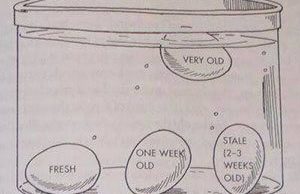
The idea behind both of them is that they will seal the inside of the egg from any bacteria that could get in. This is not the case, and neither of these methods will extend the storage life of an egg. If you want to add eggs to your emergency food stash go for the powdered kind. They’re less flexible, and a bit less appetizing, but unlike fresh eggs, they can be stored safely for longer than a couple of weeks.
#3 Breakfast Cereals
The packaging on these isn’t sturdy or airtight enough for long-term storage. After a year or so they’ll soften and start to taste stale. If you’re looking for a breakfast carb option, consider oatmeal instead. It will last for years and it’s also a lot more nutritious. If you do decide to keep a supply of cereals don’t buy it in huge bulk boxes – once it’s opened the slow deterioration will speed up dramatically. Opt for standard-size packs that you can eat in a week or two.
#2 Butter
Butter will last a lot longer than most dairy products except hard cheeses, but it’s still not a good choice for long-term storage. Wrapped or home-canned butter should be completely avoided; commercially canned can be kept for a while, but be sure to rotate it regularly to avoid old cans turning rancid at the back of your shelf.
#1 Nut Oils
A lot of people think these are healthy alternatives to vegetable oil. They definitely produce tasty meals, but they don’t keep well. Avoid nut oils if you can.
Other cooking oils are generally safe for long-term storage, but some care is needed. Don’t buy large containers; once they’ve been opened the oil will begin to oxidize, which isn’t just bad for the flavor – it can produce dangerous chemicals when the affected oil is heated. Don’t try to save money by buying in bulk and then decanting to smaller bottles – you’ll also mix air in, and that will just oxidize it even faster. Instead, buy oils in standard bottles. That way it should be used by the time it starts to deteriorate too badly.
Some of the items on this list make planning your food storage awkward – flour is probably the worst because it’s so widely used. You can keep your carbohydrate intake up with other choices, though, with pasta and rice being favorites. If you have the skills and equipment to grind your own flour it’s possible to store large quantities of wheat, and this will stay edible for years (or more likely decades) as long as you protect it well from vermin.
Any food will last longer if it’s properly looked after; equally, they will all deteriorate more quickly if the storage conditions aren’t right. If there’s something you’re not sure about asking local preppers – they might be able to tell you (although some have their own ideas, so always get a couple more opinions before splashing out a few hundred dollars on foods you can’t store. Finally, use airtight outer packaging when you can to deter pests, and keep your food in the right conditions. Consider investing in vacuum-packing gear. Good luck!



